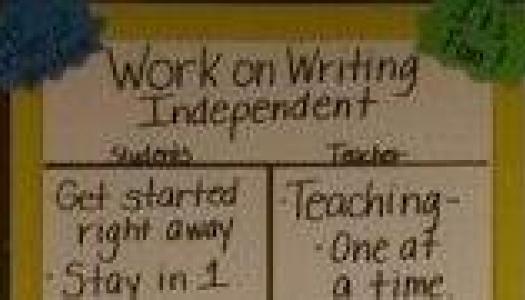Core Proposition 2: Teachers Know the Subjects They Teach and How to Teach Those Subjects to Children

Join Our Community
Access this resource now. Get up to three resources every month for free.
Choose from thousands of articles, lessons, guides, videos, and printables.
Daily 5 Connection: Literacy Learning and Classroom Management
Although Daily 5 does not hold content, it provides the structure necessary for educators to teach reading, writing, and vocabulary. This structure enables them to teach literacy in a constructive, nurturing environment. Accomplished teachers of literacy are knowledgeable about high-quality children’s literature and authors. They understand how to help students select “good-fit” books and gently guide children toward appropriate reading resources. In Daily 5, teachers are well equipped to make recommendations for Read to Self, Read to Someone, and Listen to Reading. In the area of Word Work, they are versed in offering materials that will aid students in vocabulary growth. They understand the writing process and encourage children to develop their own personal voices during Work on Writing. Through focus lessons, strategic modeling, and structured practice, teachers create instructional routines that facilitate learning.
Daily 5 Connection: Building Students’ Literacy Skills
Within the framework of Daily 5, many teachers use CAFE. Once teachers have assessed students, they can guide students in their selection of appropriate reading goals from the CAFE Menu (Boushey & Moser, 2009). These reading goals help them strengthen their skills in those particular areas and fill in gaps. Organized around the literacy components of Comprehension, Accuracy, Fluency, and Expand Vocabulary, the CAFE Menu is a tool that is beneficial in goal setting, conferring, and strengthening readers. Through brief focus lessons, strategy groups, and individual conferences, teachers assist students in meeting their goals and becoming more confident and proficient readers.
Daily 5 Connection: They are able to use diverse instructional strategies to teach for understanding
Experienced teachers have a wide repertoire of strategies to use in their craft. There is no one-size-fits-all approach to reaching students. Children who are usually the first to break stamina may need a different tactic. To help children achieve stamina in Daily 5, we offer four levels of support:
Level 1—Reflection,
Level 2—Extra Support,
Level 3—In-Class Modifications, and
Level 4—Gradual Release of In-Class Modifications.
No matter how much a student struggles or resists, the teacher is careful to always use a positive tone of voice with the child; with patience and optimism, she upholds the dignity of the student. Even if she decides to practice stamina building with the child for a few minutes during recess, she ensures that this intervention is brief and strategic (Boushey & Moser, 2014, p. 144). For both learner and teacher, each day offers a chance to build success without reminders of past missteps.
Valuable time spent working side by side with students heightens teachers’ awareness of different learning styles. If a child struggles in a certain area of reading, an expert teacher is ready to try other ways to help the student. Teachers who use CAFE in conjunction with Daily 5 work with students on various reading strategies that target their most significant areas of need. Some children are able to identify the strategy that they need to strengthen; based on skilled assessment and conferring, the teacher can guide others who are less sure which strategy to select.









